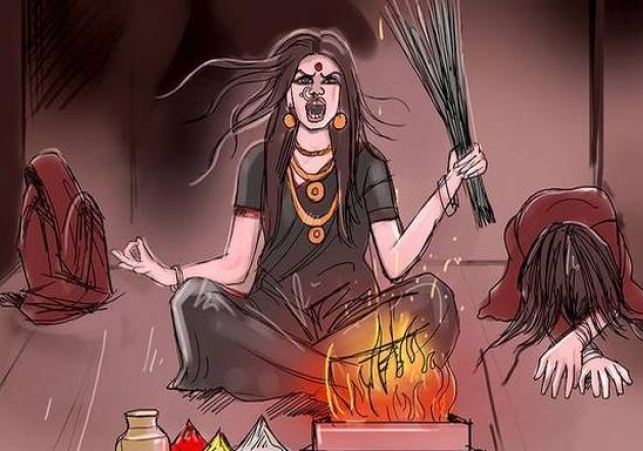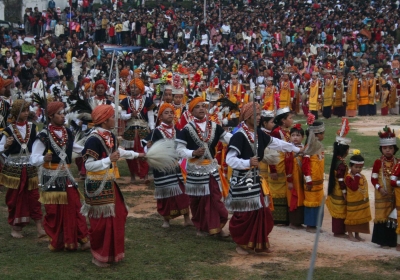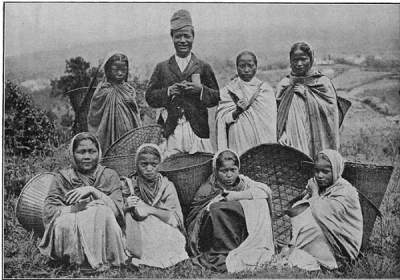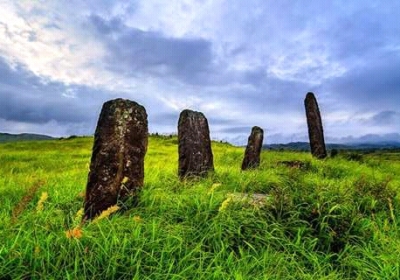Khasi Heritage: Folk Cult Practices

By Raphael Warjri
Witchcraft is considered a heretic in society and if those who indulge want to discontinue the practice out of human conscience, they can abandon it without possession of any property. There is a practice where the shaman would denounce the mammon-serpent cult through the chanting of prayers and cleanse the stigma from the evil practice and the person indulging in it has to leave everything on the spot, including their personal attire and ornaments and needs to change with fresh garments, on a naked body. Therefore, those who are enlightened about the evil practice and desire to abdicate from the cult, may endeavour through the cleansing process by renouncing every property from the house of heresy, because it is perceived that the aura of the mammon serpent is implanted in every utilities by the person who inhabit the house. The common practice is to gather all the necessary properties and hand them over to the royal family with a token exchange of cowries or money. Then the royal family would be engaged in the cleansing process for a stipulated period, where the owner could retrieve their belongings with another token exchange of cowries or money. This is necessary to ensure that the aura of the mammon-serpent is absolutely detached from the person.
The rationality of a few customary practices is authenticated by fundamental reasoning on the myth. In Khasi mythology, the royal clan emerged from the divine ancestral hereditary and prevails in human society as fellow humans. The myth revealed that the mammon-serpent recognised the divine essence of royal descendants and would not dare to antagonise them due to the damnation he faced after his infamous proclamation to live in human blood and earn enormous riches at the divine council. Therefore, the royal clan is devoid of the Thlen sorcery cult and privileged with the duty of casting away the evil force. The sorcerer cuts the hair or portion of cloth of the victim as a specimen to be-charm their aura, because in the myth, the old lady hides a portion of the python meat in her hair lock and the other lady collects another piece of python meat at her apron. The sorcerer utilises precious metals like gold, silver, brass and copper, besides exquisite fabrics, and provides silver pincers to the hired manslaughter because the mammon-serpent is fond of valuable properties and indulges in excessive riches, but is allergic to iron because, according to the myth, it was terminated with the hot molten iron. This is not a justification but a factual narrative of the mythology where some of them correlated with contemporary situation.
The creation of the divine force needs to prevail and no other creature or being on earth could endeavour to eliminate any of the divine creation. Even the prehistoric animate and inanimate organic compounds were transformed or evolved into diverse species of contemporary objects. The attempt and counter attempt of the human being and the mammon-serpent to eliminate each other will never succeed, because gods and demons are binary elements that aspire to live and relate with the entire universe in their respective domain. Every creation is provided with a regeneration process for perpetual existence in the universe and the human race is destined to usher in the divine providence of fecundity through the Kameikha cult. The Ka-Meikha peak is associated with the ceremony of paying obeisance to the deity of biological regeneration. Ka-Meikha denotes the paternal mother as the provider of a father to the other clan, because marriage within the clan is sacrilege and considered incest. The matrilineal practice of clan lineage prevailed in Khasi society based on the fundamental ground of the Khasi creation myth and genesis of mankind. The Mother-Earth is the core of creation where every life conceives, germinates, evolves, grows, develops, matures, dies and is regenerated again with the encounter of the binary elements- that is between the earth, or Mother-Earth or Meiramew and the rock, or Ryngkew Basa. The umbilical cord is the source of life that originated from the celestial realm and is connected with earth, which is depicted by the myth of Heavenly Umbilical peak or Sohpetbneng. The myth has a metaphor in the navel of the mother which is linked with the infant she conceived inside her womb. Furthermore, biological sciences also substantiated the theory of mitochondrial DNA, where the descendants are the precise identity of the mother, and the seed of the father is the essential component for reproduction purposes.
Therefore, the mother is an integral part of the reproduction and regeneration process and the Khasi culture upholds the role of the mother in the social and cultural existence. The mother is the custodian of maternal family properties and the maternal uncle is the supreme authority. Therefore, the father of one clan, along with every male sibling, is the maternal uncle of his own clan who has the authority and is in the care of his maternal clan. In this regard, the reverence for the paternal grandmother in Khasi culture is considered auspicious and counter marriage with the clan of the father is strictly prohibited. Every person of any clan is an obligatory to the paternal grandmother or Ka Meikha as the provider of a father to their clan. There is a ceremony called Ka Nguh Meikha in Khasi, which means to pay obeisance to the paternal grandmother. The obeisance ceremony is accompanied by a folk dance where the children of a father dance in the courtyard of their grandmother’s home and seek her blessing for well-being and prosperity. In ancient times, the community ceremony was performed at the altar of Ka-Meikha peak and a dance festival was held in gratitude to every paternal grandmother or Ka Meikha within the Khasi community. However, due to historical consequences, the tradition was usurped by the Hindu mystical cult of Tantric ceremony, and the Ka-Meikha sacred altar of the Khasi community was converted into Kamakhya temple. In the animistic tradition, nature creates and recreates sacred mounds for the purpose of worshipping the deities, without any structures of human intervention. It is interesting to note that Kamakhya temple is the only Hindu mandir without an idol as a symbol of worship, which denotes that it adheres to the Khasi concept of the divine.







